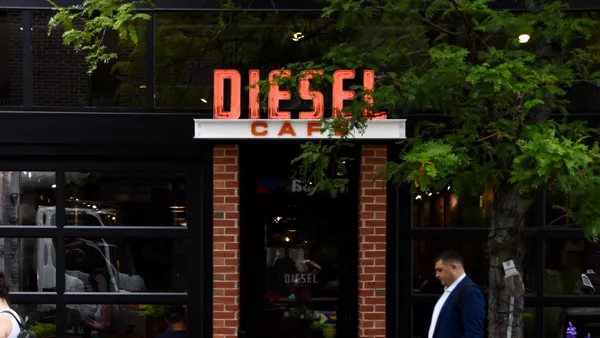On Wednesday, the Bureau of Labor Statistics released its June inflation estimates, showing year-over-year inflation moderated to 3%, with food-away-from-home prices up 0.4% compared to May. Also on Wednesday, Restaurant Dive closed its Friday Feedback form after receiving a number of reader responses from professionals in segments ranging from fast casual eateries to full-service chains.
Here’s what readers spread from Colorado to Australia had to say about menu pricing.
On balance, all of the readers who answered the survey said they had raised prices. The lowest price increase was about 5%, and the highest about 10%.
Darden Coors, chief executive officer at Salad Collective, said the chain “raised prices 6.5% and 8.5% in Denver based on mandated higher minimum wage laws.” The minimum wage in Denver increased from $15.87 in 2022 to $17.29 in 2023, while the statewide minimum wage in Colorado increased from $12.56 to $13.65, both increases of more than 8.5%.
Karen Olic, at the Parramatta Leagues Club in Australia, said that in addition to price hikes of 5% to 10%, the company created smaller, snack-sharing meals that are affordable. This led to “patrons purchasing multiple items and the feeling like they are getting [a] variety of meals rather than just one item whilst spending the same,” she said.
One New York fast casual restaurateur who declined to give a last name said his brand raised prices between 5% and 10%.
Most respondents said they’d received little, if any, pushback on pricing. Keith Langdon, a full-service restaurateur in Michigan, said his pricing decisions generated “a little pushback, but not much.”
While Salad Collective has not received any overt feedback from its diners, some customers may be voting with their wallets.
“Traffic overall is down,” Coors said. “Some weather related, but have to assume some is pricing.”
Olic said most customers like the value of what they’re getting, though some have argued with the changes.
Beyond simple price increases, readers have undertaken other measures to control menu costs. For Olic, that meant “charging for packaging if they request it for takeaway, as consumables costs have also risen dramatically.”
The unnamed New York reader has changed the layout of the menu to de-emphasize higher cost items. Langdon, by contrast, cut the size of the menu overall and eliminated “extra” items.
Coors said Salad Collective has looked to LTOs that have lower costs, or that have premium ingredients enabling them to charge higher prices, thus increasing check size.
Such strategies mirror overall industry trends toward smaller menus and more frequent changes to prices.














